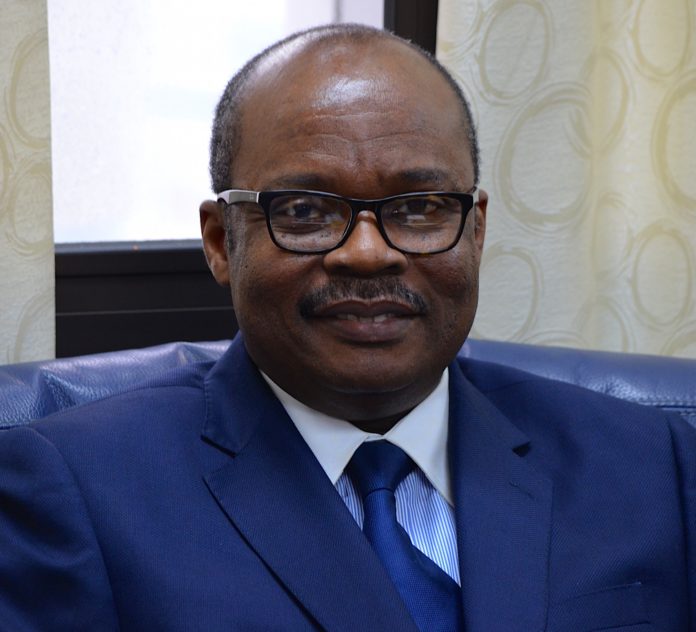Governor of the Bank of Ghana (BoG), Dr Ernest Addison says the Ghanaian economy has strong growth prospects, with major indicators pointing in the right direction.
With a flourishing private sector, inflation well anchored, and foreign reserves reliable, the Bank of Ghana remains confident the economy is in good health, he added.
The governor, who announced an unchanged policy rate (16%) to reporters in Accra yesterday, said “economic growth remains steady and is projected to gain some additional momentum over the horizon, supported by crude oil production”.
“Core inflation remains subdued and price-growth expectations are well-anchored,” Dr Addison said.
He disclosed the bank’s yearly growth of 4% in March 2019 from 2.9% in 2018.
“This robust pace of economic activity is supported by improved sentiments from businesses following the recovery of the local currency from its sharp depreciation and favourable growth prospects; early indications already show that economic activity in the first quarter is picking up pace as evidenced by Ghana Composite Index of Economic Activity (CIEA),” he stated.
As further proof of the economic buoyancy, Dr Addison told reporters that growth in credit to the private sector had continued to gain traction, as banking sector liquidity improved, on the back of a successful recapitalisation exercise.
Annual growth in private sector credit was up 19.8% in April 2019, compared with 5.6% growth in the same period in 2018.
“In real terms, private sector credit expanded by 9.4%,” Dr Addison stated.
The regulator’s latest assessment of the banking sector had become resilient and “is well capitalised, solvent and liquid; profitability is also on the rise as banks deploy their additional capital on interest earning assets”.
On a year-to-date basis, private sector credit recorded a 5.1% growth in April 2019, compared with a contraction of 4.0% last year.
Banks’ total assets for the first four months of 2019 amounted to GH₵109 billion, representing an annual growth of 12.4%. Bank deposits grew by some 19.6% year on year.
The BoG was, however, worried about high Non-performing Loans (NPLs), though had declined from 23.5% in April 2018 to 18.9% in April 2019, remained high and pointed to the industry’s exposure to credit risk.
The BoG pointed out that beyond the positive outlook for the domestic economy, the accommodative monetary policy stance by most advanced economies broadly offered some scope for favourable global financing.
The development, Dr Addison noted, could have positive implications for emerging market and frontier economies with strong macro fundamentals as investors search for higher yields.
“These developments could impact positively on Ghana through the trade and credit channels,” he added.
On fiscal developments, Dr Addison said the committee noted that implementation of the budget in the year to April 2019 showed continued challenges with revenue mobilisation, alongside increased pace of spending, which posed some risks to the fiscal outlook.
“Expenditure pressures have been exacerbated by payments associated with the energy sector. These are exerting financing pressures on government, and more stepped-up efforts would be required to ensure total realignment of expenditures to revenues,” he said.
GH¢198 billion public debt
Total public debt rose to 57.5% of GDP (GH¢198 billion) at the end of March 2019, compared with 49.5% of GDP (GH¢147.9 billion) at the end of March 2018.
GH¢11 billion bonds issued to support the financial sector cleanup
Of the total debt stock, GH¢11.0 billion (or 3.2% of GDP) represented bonds issued to support the financial sector cleanup.
1.8% budget deficit of GDP in first quarter
On the execution of the budget, provisional data for the first quarter of 2019 showed an overall deficit (on cash basis) of 1.8% of GDP against the target of 1.4% of GDP and a primary deficit of 0.8% of GDP compared to a targeted deficit of 0.3% of GDP.
The higher-than-projected fiscal deficit outturn was due to the lower-than-projected domestic revenue collections, which were not accompanied by expenditure rationalisation.
The revenue shortfalls were mainly from personal income taxes, import duties and levies, and non-tax revenues.
GH¢10.1 billion total revenue and grants in first quarter
Over the quarter, total revenue and grants amounted to GH¢10.1 billion, compared with the programmed target of GH¢12.4 billion.
GH¢16.5 billion total expenditure in first quarter
Total expenditure was GH¢16.5 billion, slightly below the target of GH¢17.3 billion, and representing a 37.7% annual growth.
$9.3 billion Gross International Reserves
The Gross International Reserves (GIR) as at end of April 2019 was $9.3 billion (4.7 months import cover), largely on account of energy-related debt payments and higher obligations associated with externally held domestic debt payments.
Source: The Finder

